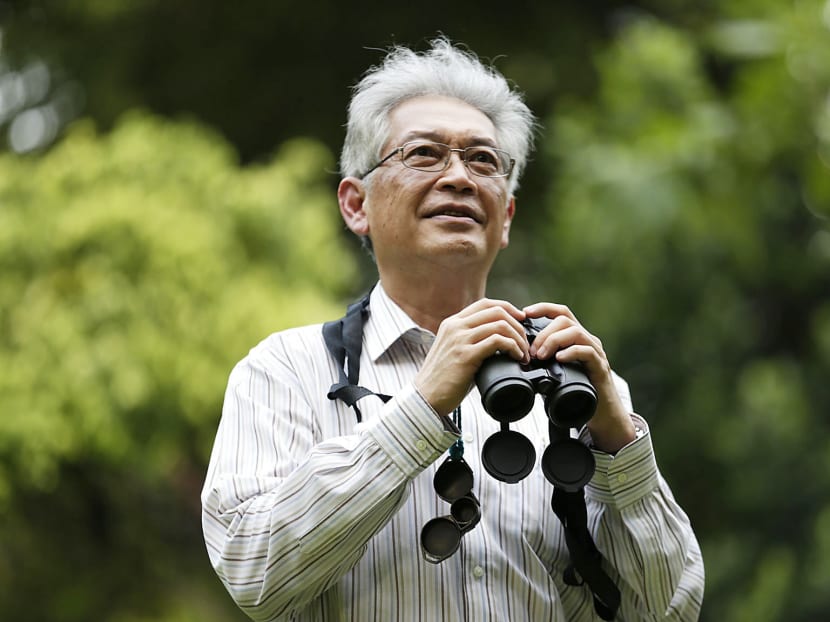The Big Read: Gynaecologist goes from observing sea life to watching birds
SINGAPORE — Before he trained his sights on birds, gynaecologist Ng Soon Chye was keener on marine life, heading often to the shores and reefs of Labrador and the Southern Islands to collect specimens.
SINGAPORE — Before he trained his sights on birds, gynaecologist Ng Soon Chye was keener on marine life, heading often to the shores and reefs of Labrador and the Southern Islands to collect specimens.
In fact, he wanted to apply to the Scripps Institution of Oceanography in San Diego, California, for undergraduate studies but his father was “more pragmatic” and had reservations about making a living from marine biology at the time.
“But no regrets,” said Professor Ng, 66, who studied medicine and later became a pioneer in assisted reproduction.
His interest in birds grew after outings with some birdwatchers during his house-officer days. Then, members of the bird study group of the Malayan Nature Society’s Singapore branch were mainly from the British army.
When the troops withdrew, the bird study group needed more locals and Prof Ng stepped forward to become its chairman, and the group went on many bird-ringing trips.
Once, in a wondrous turn of events, a curlew sandpiper — a migratory bird with a large range that breeds near Russia — which Prof Ng had ringed at the Serangoon Sludge Treatment Works, was netted and identified months later in Melbourne by the study group’s ex-chairman, who had relocated to Australia.
When Prof Ng was doing National Service as a medical officer in the navy, he spent 1.5 months on a ship in the South China Sea, observed migrating barn swallows and published a paper on them.
He later devoted more of his energy to a magnificent bird, the hornbill. “It’s not that I was no longer interested in other birds, but I didn’t have so much time,” he said.
Hornbills are “really large birds, iconic, on top of the food chain and they are like markers of the forest. You can tell the health of the forest or jungle by having an idea of the fauna at the top of the food chain”.
From 2004, Prof Ng initiated a project with fellow birder Marc Cremades to study and enhance the population of the Oriental Pied Hornbill, which had not been recorded in Singapore for over 70 years until it was sighted in 1994.
From being seen primarily on Pulau Ubin, the bird became sighted quite frequently all over mainland Singapore within a decade. Hornbills nest in hollow cavities of trees and, when breeding, the female would be confined in a sealed nest with a small gap for the male to pass food through.
Artificial nests were also used in the Singapore Hornbill Project, which increased understanding of its breeding cycle and habits, such as through observations of infanticide-cannibalism where the mother hornbill kills weaker chicks and feeds them to other offspring.
Prof Ng also took up videography and went on field trips in Thailand with world-renowned hornbill expert, Dr Pilai Poonswad. She would identify the hornbills’ nesting area, and Prof Ng would capture video footage of the goings-on.
“I’m more interested in action, maybe as a result of watching movies and Nat Geo,” he said.
Due to age and shifting priorities, Prof Ng has cut down on birding activities but stands ready to help animal facilities in the reproduction of species.
He does not consider himself an authority on birds, but has certainly inspired others.
Mr Lim Kim Seng, 56, who has written five books on birds, said Prof Ng led the first trip he went on decades ago. “I’d say he was one of my mentors when I took up birding…I was inspired too, to be as keen as him,” said Mr Lim.







